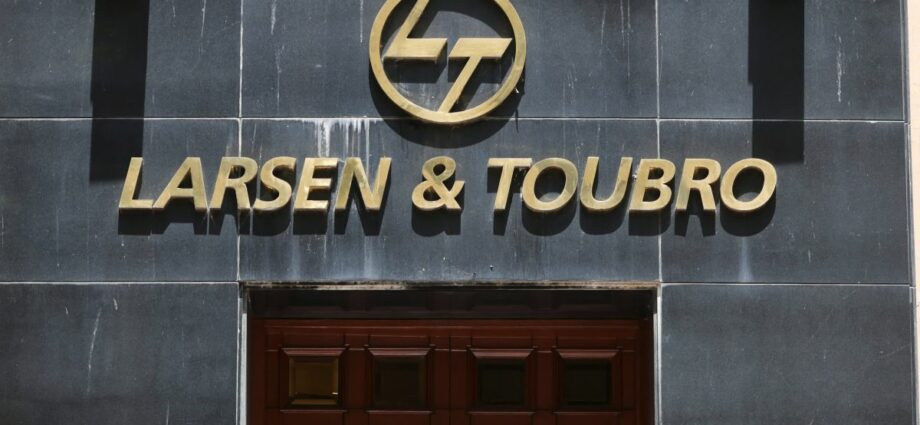‘Policy-sensitive sectors will wait and watch, but policy-agnostic areas will continue based on normal consumption demand.’
Larsen & Toubro (L&T) will consider a share buyback once every few years, says R Shankar Raman, whole-time director and chief financial officer for L&T, in an interview with Amritha Pillay/Business Standard.
He expects policy-dependent private capital expenditure (capex) to hit pause and wait to watch for the general election results. Public capex, he says, currently benefits from an electoral bias.
L&T reported a strong 2023-24 first-quarter (Q1) performance. What major tailwinds are you witnessing in order wins?
There is some effort from both the state and central governments.
I am not sure how much of that is political pressure to keep announcing projects and be seen as pro-development governments, doing something for the public at large, etc.
International funds are available for infrastructure, and there is a benefit in terms of an electoral bias.
We do believe that the agencies sponsoring these projects will continue to do so for the rest of the year.
Whether that happens throughout the year or partly depends on election announcements, which could drive our achievements during the year.
I don’t want to over-read into the 57 per cent growth in Q1. This conducive environment for order accretion must continue for the next few quarters.
And execution?
Execution faces several challenges, such as approvals, clearances, mobilising the required equipment and manpower, skill shortages, etc. It is good that we managed well in Q1.
Second quarter is a fresh start, and we have a large order book that provides the reason for volume growth in sales.
Profit growth will have to follow, but the margin is not keeping pace with the sales volume right now.
The jobs have to progress efficiently for us to recognise margins.
How is private capex shaping up?
Nothing significantly different from the last time. For the first three months, about 32 per cent of orders are from the private sector.
Much of the private sector’s investment is happening in energy transition and green energy.
So almost half of the private sector orders received are for green energy, from both domestic and international sources.
The remaining 20 per cent is industrial, and 30 per cent is residential/commercial complexes.
The industrial capex involves expanding lines rather than setting up new factories.
Companies in paint, cement, steel, zinc, and aluminium sectors are expanding and adding extra lines.
In that sense, do you find Indian private industrial capex wanting further growth?
My sense is that those who see prospects for their investments to return value beyond this big event that is awaiting us (general election) will continue to invest.
Construction material companies are investing because they believe that over time, notwithstanding the election, the sector will do well.
However, private investments that depend on policies will possibly wait to see the outcome of the election results.
So policy-sensitive sectors will wait and watch, but policy-agnostic areas will continue based on normal consumption demand.
Sectors involving policies like some aspects of telecommunications and chip-making will pause.
Do new business segments such as chip-making or the lithium value chain interest L&T?
No, I don’t think we are looking at manufacturing semiconductors or chips.
But if a facility needs to be put up for chip-making, maybe we could offer our services to set up that facility.
We have been exploring various parts of the lithium value chain, but we have not reached any definitive conclusion on that front.
We have been evaluating batteries as storage mechanisms in the larger context. However, it is a rapidly changing field.
With the proceeds utilised for the Rs. 10,000 crore buyback, is inorganic expansion on the back burner?
What we are attempting to do with the buyback is to return the excess cash generated in our business for which we do not have any immediate use.
We have factored in normal investments that we are required to make, whether it is in our working capital, fixed capital, or any inorganic requirements.
We have sort of earmarked some cash and reserved it. But if a very large opportunity arises, then the company might have to look at ways and means of financing that acquisition.
It could involve using the company’s stocks or leveraging the balance sheet.
It depends on what that opportunity is, but I don’t see anything on the horizon right now.
Since the regulations on buybacks are clearer now, we may consider buybacks once every few years if it is the most tax-efficient way of distributing value back to shareholders.
You have proposed to make a separate subsidiary for the green energy business, a detour from your usual structure of business divisions. Any specific reason?
This is going to involve a technology partnership, which we initially solved with a licensing agreement.
But this is an evolving space, and we are making our moves in completely untested waters.
We think we have the competency, but whether the world adopts electrolysers at what price points, etc, we’ll have to wait and watch.
So we wanted to do this in a separate special purpose vehicle to have the flexibility to scale up if required, including financial partnership, if it warrants.
Feature Presentation: Aslam Hunani/Rediff.com
Source: Read Full Article
-
Every Plane in the US Navy
-
Broadway Casting Shake-Up: Duncan Stewart To Head New RWS Entertainment Group Casting Arm As Stewart/Whitley And Binder Casting Dissolve
-
Top CEOs got an average hike of 9% in 2022, workers’ wages fell 3%: Oxfam
-
The Fastest Vehicles in the US Military
-
Rescue for tourist stranded after expiry date nightmare – The Crusader

